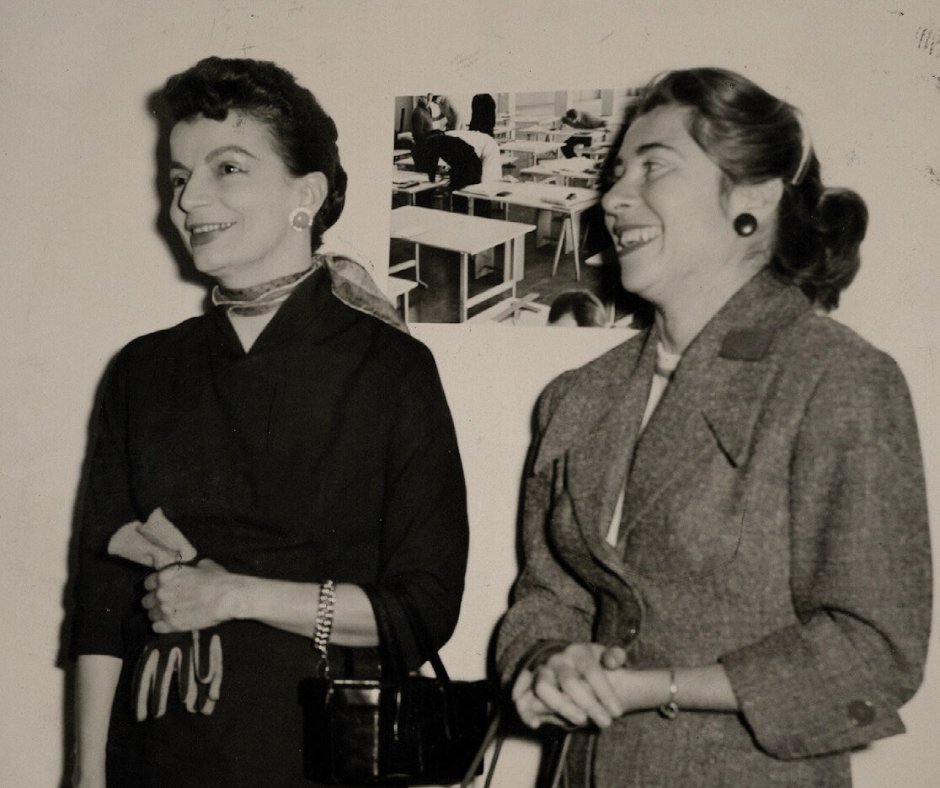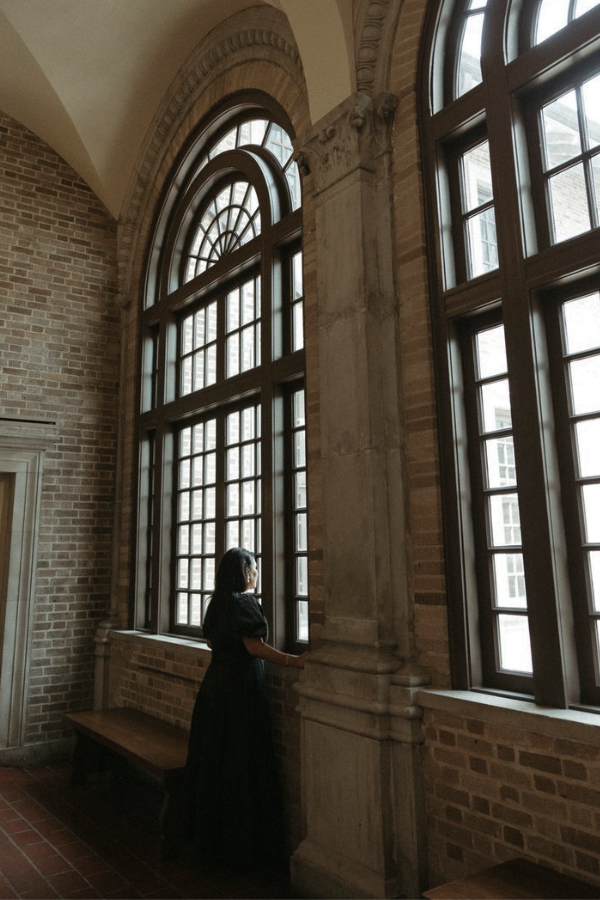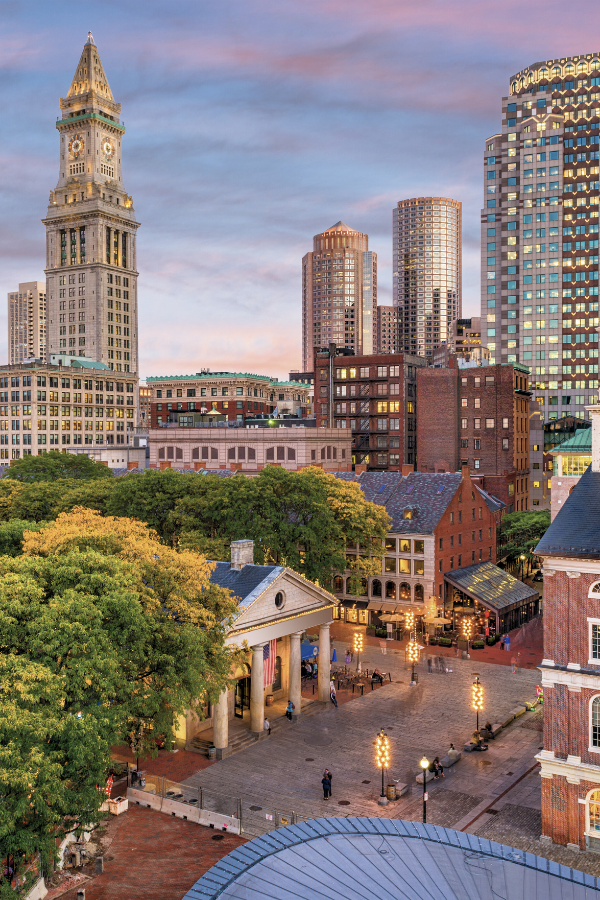
Nature & Culture: Things to Do in Marrakech as a Creative
Summary
Reflection Questions
Journal Prompt
Marrakech, a city steeped in history and culture, has long been recognized as a central hub for artistic and creative endeavors. In this article, we will guide creatives through the myriad of unique experiences that Marrakech offers, highlighting its rich cultural tapestry that continues to inspire artists, writers, and creators from around the world. By providing a detailed exploration of its historical sites, vibrant art scene, and diverse creative activities, we hope to offer valuable insights for those looking to immerse themselves in the city’s dynamic artistic environment. From the narrow streets of the city centre to each beautiful palace along the city’s edge to a hot air balloon ride over otherworldly landscapes of the Sahara Desert a few hours away, read on for our list of to-dos while visiting Marrakech.
Identifying the Ideal Time to Visit
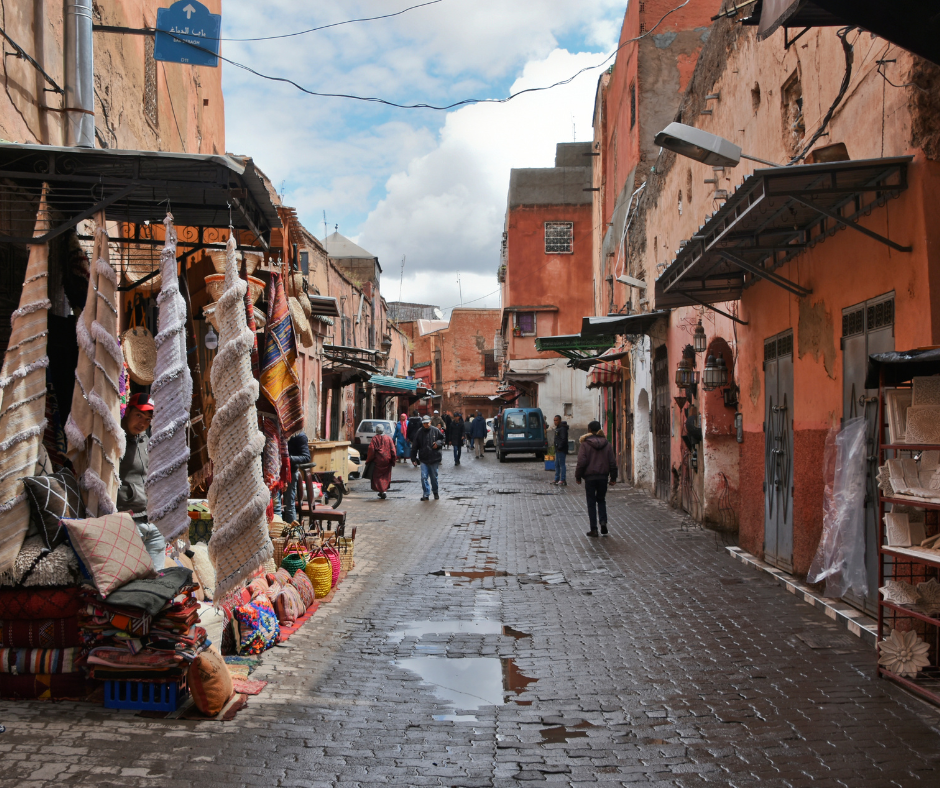
Marrakech experiences a semi-arid climate, characterized by distinct seasonal variations. The summers (June to September) are typically hot and dry, with average temperatures often exceeding 35°C (95°F), making outdoor creative activities challenging during midday.
Conversely, winters (December to February) are mild and wetter, with occasional rainfall, offering a refreshing contrast to the summer heat. The average winter temperature hovers around 18°C (64°F). Visiting Marrakech in spring (March to May) and autumn (October to November) means a moderate climate with temperatures averaging 22°C to 28°C (72°F to 82°F), conducive to both indoor and outdoor artistic pursuits.
Pros and Cons of Each Season for Creative Activities
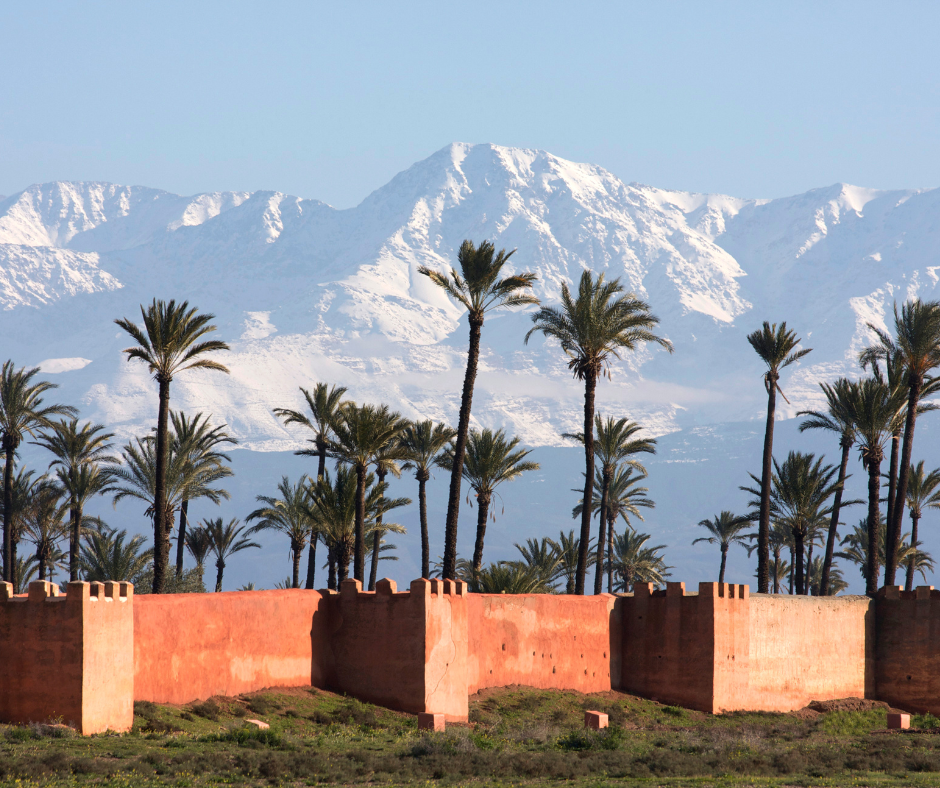
The intense summer heat limits outdoor explorations but offers bright, unfiltered light ideal for photography and painting. However, this season sees fewer cultural events.
Winter provides comfortable conditions for extended outdoor activities, like exploring the Medina or participating in outdoor workshops, but the occasional rains might disrupt plans. Spring and autumn are arguably the best times for creatives, offering a balance of pleasant weather and vibrant city life, ideal for both indoor and outdoor artistic exploration.
Recommended Times for Creatives
Marrakech’s cultural calendar is punctuated by several events and festivals, particularly in the spring and autumn. Notable events include the Marrakech Biennale, a contemporary arts festival held in odd-numbered years, and the Marrakech International Film Festival, usually in autumn. These seasons also witness a surge in local art exhibitions and cultural workshops, offering a rich milieu for creative inspiration and networking.
Balancing Tourist Crowds with Cultural Immersion

While spring and autumn attract more tourists due to the favorable weather, they also offer the best opportunities for cultural immersion. Creatives might prefer to visit during these peak seasons to experience the full vibrancy of Marrakech’s artistic scene.
However, for those seeking a more tranquil environment to focus on their work, the shoulder months of November and February might be more suitable, as they offer a quieter yet still culturally rich atmosphere.
Historical and Cultural Immersion
Exploring the Medina
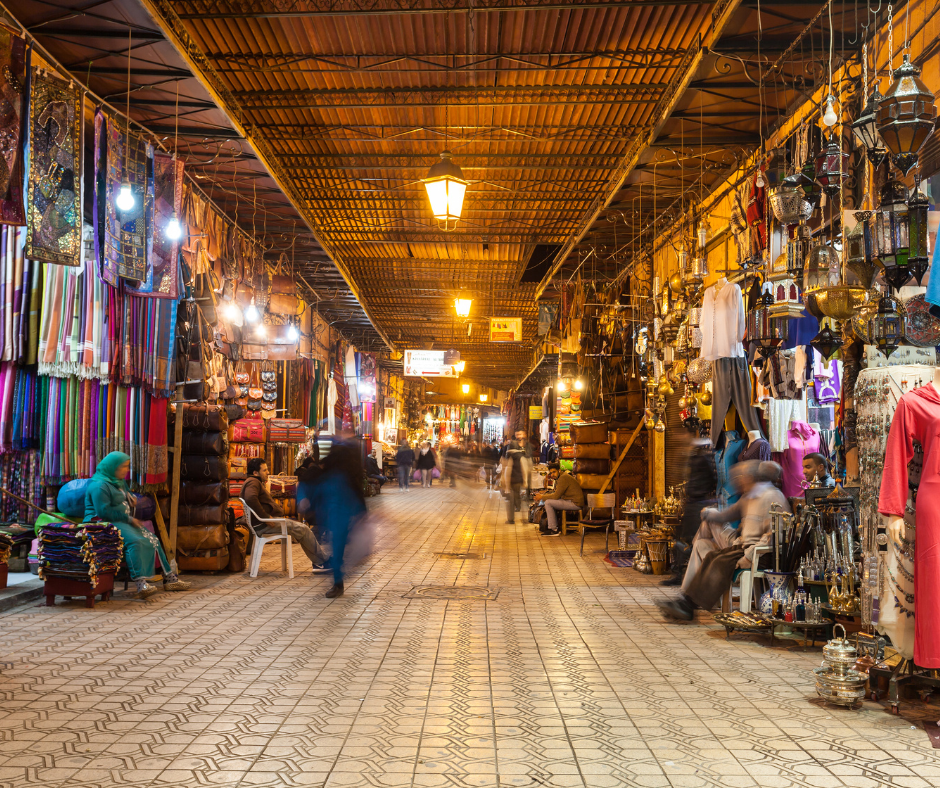
The Medina of Marrakech, a UNESCO World Heritage Site, is an intricate maze of historical pathways leading to a multitude of souks (markets). These souks are more than just commercial spaces; they are a living showcase of Moroccan craftsmanship.
Here, creatives can explore a variety of artisanal workshops, from leatherworking to metalworking, offering a glimpse into traditional Moroccan arts. The vibrant colors, textures, and patterns found in these souks provide a rich tapestry of inspiration. Moreover, the process of creation, often visible in open workshops, offers insights into the intricate techniques and skills passed down through generations.
Engaging with local artisans is not merely a transactional experience but an opportunity for cultural exchange. Many artisans are eager to share the stories behind their craft, providing a deeper understanding of the cultural significance of their work.
For creatives, these interactions are invaluable; they offer a perspective that transcends the mere aesthetic and delves into the essence of Moroccan artistic heritage. This engagement also supports the local economy and helps preserve these traditional crafts for future generations.
Wandering Along Rue de la Kasbah

Rue de la Kasbah is a significant street located in Marrakech, Morocco. It is known for being a vibrant and bustling part of the city, offering a blend of historical and cultural experiences. The Kasbah district, historically, was a place of importance, serving as the royal citadel. It is a fortified area that houses several significant buildings, including palaces and mosques.
This area is known for its rich history and is home to several notable landmarks, such as the El Badi Palace, the Saadian Tombs, and the Moulay El Yazid Mosque. These attractions draw many visitors keen on exploring the historical and architectural heritage of Marrakech.
However, it is not just a tourist attraction; it’s also a part of the daily lives of locals. The street and its surrounding areas are lined with a variety of shops, markets (souks), and eateries, offering a glimpse into the contemporary urban culture of Marrakech. Visitors can find a range of items from traditional Moroccan crafts to everyday goods.
Atmosphere and Accessibility
The street is known for its lively atmosphere, characteristic of Marrakech’s bustling streets. It’s a place where the traditional meets the modern, with the vibrancy of Moroccan culture evident in every aspect – from the architecture to the goods sold in the markets.
The street is accessible on foot from other parts of the Medina and is often included in walking tours of Marrakech. Its location within the historic center makes it a convenient spot for visitors staying in or exploring the Medina.
Walking along Rue de la Kasbah offers a chance to experience the blend of Arabic, Berber, and African cultures that is quintessential to Marrakech. It is a place where one can observe the melding of history with the contemporary rhythm of Moroccan life. Enjoy Moroccan food at one of the best restaurants in the Middle East, get a traditional massage, or enjoy a cup of tea on a beautiful rooftop terrace. This part of Marrakech has it all.
Historical Sites
Bahia Palace: A Study in Architecture and Design

The Bahia Palace, built in the late 19th century, stands as a testament to Moroccan architecture and Islamic design. Its intricate tile work, carved wood, and painted ceilings provide a rich source of inspiration for design-focused creatives.
The palace’s layout, featuring a series of courtyards and rooms, reflects the traditional Moroccan riad style, offering insights into the spatial dynamics of Islamic architecture. The harmony of decorative art and architectural design in Bahia Palace makes it a crucial study point for those interested in historical design principles.
Saadian Tombs: A Unique Historical Perspective
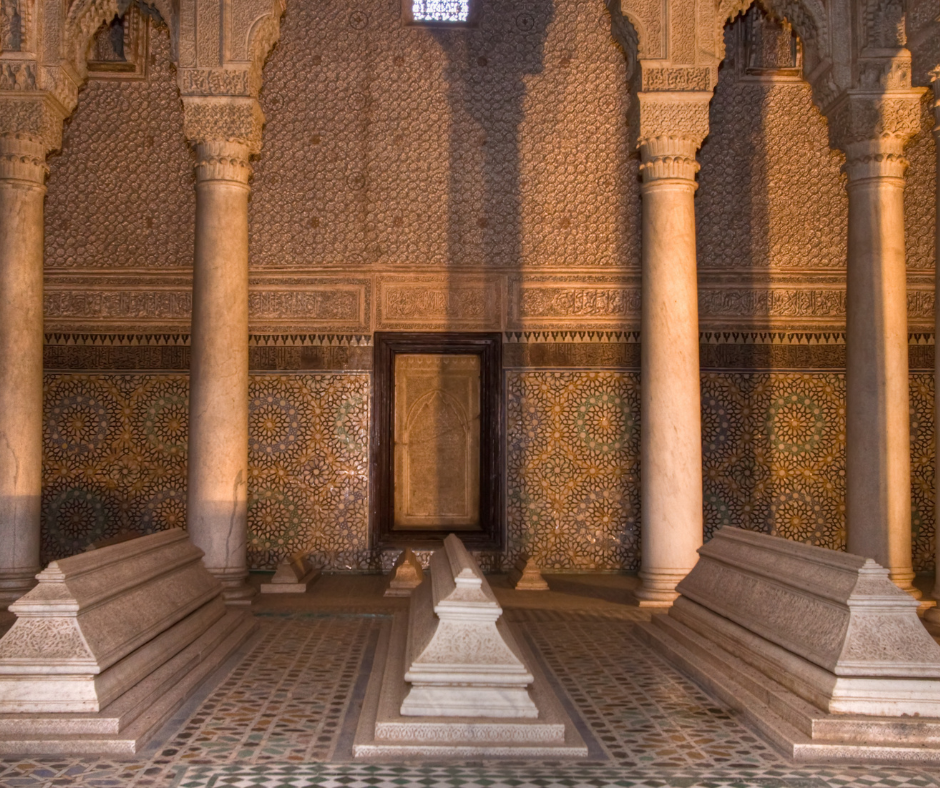
The Saadian Tombs, dating back to the time of the Saadian dynasty in the 16th century, offer a unique historical perspective. These tombs are renowned for their intricate decorations and the use of Carrara marble.
For creatives, they are a source of inspiration in understanding the blend of Islamic and Moroccan architectural styles. The site encapsulates the opulence of the Saadian era and offers a silent, reflective space to ponder the transient nature of art and empire.
Jardin Majorelle: Yves Saint Laurent’s Artistic Legacy
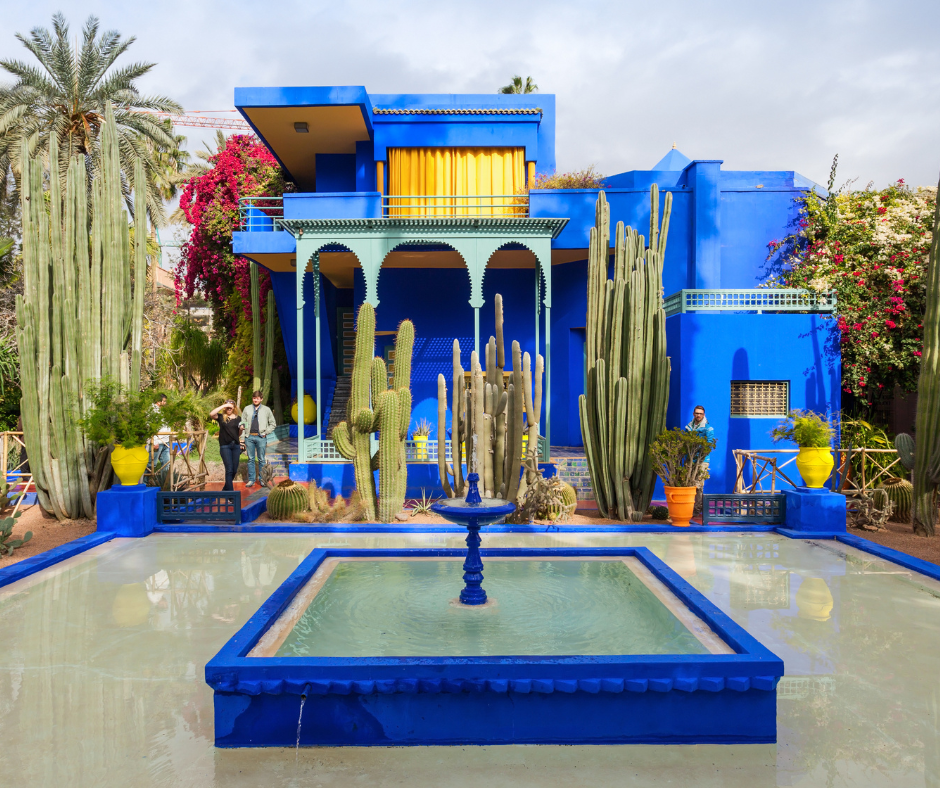
Named after French painter Jacques Majorelle and once owned by the renowned fashion designer Yves Saint Laurent, Jardin Majorelle is a vivid botanical garden that blends art, nature, and fashion. It is one of the most popular tourist attractions within Marrakech city limits.
Known for its iconic cobalt blue accents, the garden is not only a horticultural masterpiece but also a source of artistic inspiration. It reflects Saint Laurent’s vision of merging natural and artistic aesthetics. The garden also houses the Islamic Art Museum of Marrakech, the Berber Museum, and the Yves Saint Laurent Museum, each offering a different artistic perspective and honoring the diverse cultural influences in Morocco.
Koutoubia Mosque: A Masterpiece of Islamic Architecture

The Koutoubia Mosque, located in Marrakech, Morocco, is one of the most significant landmarks in the Red City and a masterpiece of Islamic architecture. Its history and design are rich in cultural and religious significance, making it an icon of the Middle East.
The Koutoubia Mosque was built during the Almohad period. The construction began under the reign of Abd al-Mu’min, the first Caliph of the Almohad Caliphate, around 1150. It was completed during the reign of his grandson, Yaqub al-Mansur, in the 1190s. The mosque was intended to serve as a grand symbol of the Almohad dynasty’s power and religious devotion.
Architecture
The mosque is renowned for its architecture, which reflects the classic Moorish style. It is particularly famous for its magnificent minaret, which stands at about 77 meters (253 feet) tall, making it the tallest structure in Marrakech. The minaret is square in shape and beautifully ornamented with pointed merlons, arches, and decorative tile work. It served as the model for the Giralda of Seville and the Hassan Tower of Rabat, illustrating its influential design.
The minaret of the Koutoubia Mosque is not only a visual landmark but also historically significant. It was one of the most ambitious projects of its time and set a standard for Moroccan-Andalusian architecture. The tower is adorned with four copper globes, which, according to legend, were originally made of pure gold.
Interior Gardens
The mosque itself boasts a large prayer hall and beautifully landscaped gardens. However, non-Muslims are not allowed inside the mosque, in keeping with traditional practice in many mosques in Morocco. Despite this, the exterior and the surrounding area offer plenty of architectural and cultural insights.
Cultural Significance
Beyond its architectural grandeur, the Koutoubia Mosque is a spiritual center for the Muslim community in Marrakech. The mosque and its minaret have become symbols of the city, often featured in art and literature and serving as an orienting landmark for both locals and tourists.
Location
Situated near the Djemaa el-Fna, the bustling main square of Marrakech, the Koutoubia Mosque is a focal point in the city. Its location makes it a popular starting point for exploring the city’s historical and cultural sites. The Koutoubia Mosque is not far from the main international airport: Marrakech-Menara.
The distance between the Marrakech-Menara Airport and the Koutoubia Mosque is approximately 5 to 8 kilometers (about 3 to 5 miles), depending on the specific route taken. The Koutoubia Mosque’s blend of religious significance, architectural beauty, and historical depth makes it a key site of interest in understanding Moroccan and Islamic heritage.
Artistic Inspiration and Activities
Museum of African Contemporary Art Al Maaden (MACAAL)
The Museum of African Contemporary Art Al Maaden (MACAAL) is a pivotal institution in Marrakech’s art scene, dedicated to promoting African art. MACAAL offers a diverse collection, ranging from established to emerging artists, and provides a comprehensive view of contemporary African art.
The museum’s exhibitions are curated to stimulate discourse and reflect the dynamic landscape of African artistic expression. For creatives and scholars alike, MACAAL serves as an invaluable resource for understanding the trends, themes, and techniques prevalent in modern African artistry. Don’t miss the Marrakech Museum while in town!
Dar Si Said Museum of Moroccan Arts and Crafts
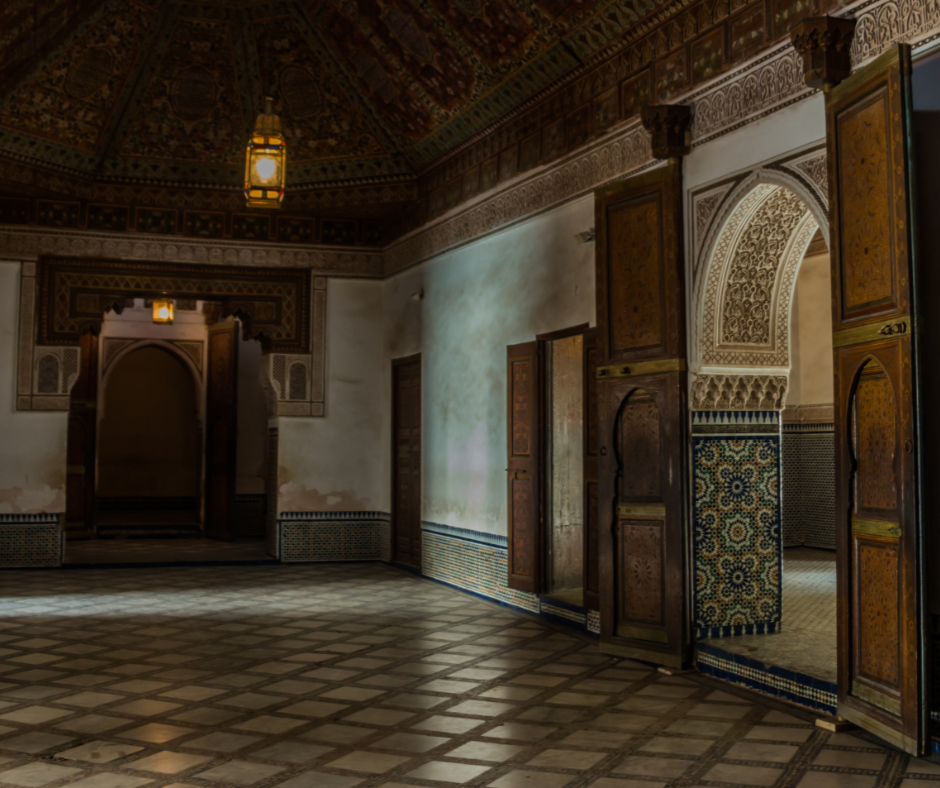
The Dar Si Said Museum, also known as the Museum of Moroccan Arts, is an essential visit for those interested in traditional Moroccan crafts and design. Housed in a 19th-century palace, the museum showcases a wide array of Moroccan art including carpets, ceramics, and jewelry.
The exhibits provide insight into the regional variations and historical evolution of Moroccan craft traditions. The museum’s setting itself, with its Andalusian-style garden and ornate architecture, offers a tangible connection to Morocco’s rich artistic past.
Photography Tours

Marrakech’s bustling streets and historic architecture provide a visually rich environment for photographers. Guided photography tours often focus on the Medina, with its labyrinthine alleys and vibrant market scenes.
These tours offer photographers of all skill levels an opportunity to capture the essence of Marrakech’s daily life. The contrast between the traditional Moroccan architecture and the vibrant daily activities of its residents offers endless opportunities for dynamic and compelling photography.
Jemaa el-Fnaa, the main square in Marrakech, transforms into a lively hub at night, making it an ideal subject for night photography. The square fills with food stalls, performers, and storytellers, creating a lively atmosphere. Photography tours during the evening can capture the unique nocturnal ambiance of the square, highlighting the interplay of light and shadow, and the vibrant energy of this iconic public space.
Creative Workshops
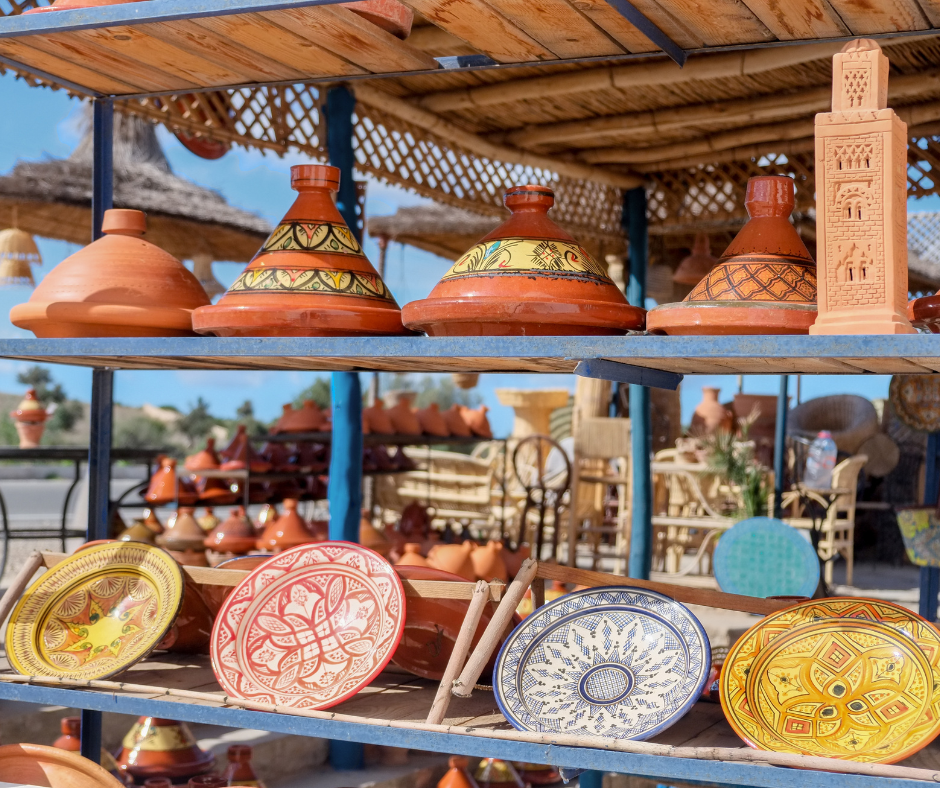
Pottery and ceramic workshops in Marrakech offer hands-on experience in traditional Moroccan pottery techniques. These workshops provide a unique opportunity for creatives to engage directly with the tactile art form.
Participants learn about the materials, techniques, and designs specific to Moroccan ceramics, often under the guidance of skilled local artisans. These workshops not only impart technical skills but also provide a deeper appreciation for the cultural significance and heritage of Moroccan pottery.
Be sure to enjoy a cup of delicious mint tea while soaking up Moroccan culture at your ceramic workshop! There are bound to be several cafes within walking distance.
Culinary Exploration for Creatives
Moroccan Cooking Classes

Next on our list of what to do in Marrakech as a creative is to take a cooking class in the city center! Moroccan cooking classes offer an immersive experience into the rich culinary traditions of the region. These classes often begin with a discussion of the distinctive flavors and ingredients that define Souk cuisine, such as ras el hanout, preserved lemons, and argan oil. Participants are then guided through the preparation of traditional dishes like tagine, couscous, and pastilla.
These classes not only teach culinary techniques but also provide a deeper understanding of the cultural significance of traditional Moroccan dishes. The hands-on experience of cooking and the stories behind the dishes enrich the creative process, offering insights into Morocco’s gastronomic heritage.
A fundamental part of the Moroccan cooking experience involves visiting local spice markets. These markets, brimming with an array of spices and herbs, are a sensory delight and a source of inspiration. Exploring these markets offers an opportunity to learn about the variety and uses of spices in Moroccan cuisine. The vibrant colors, rich aromas, and the hustle and bustle of the markets provide a vivid backdrop for creatives, deepening their culinary and cultural exploration.
Cafe Culture

Marrakech’s historic cafes have long been gathering places for writers, poets, and intellectuals. These cafes, with their rich history and traditional decor, offer a serene environment conducive to writing and creative thinking.
The atmospheric settings, often adorned with Moroccan tiles and lanterns, provide a connection to the past and serve as a source of inspiration. The tradition of these historic cafes as meeting places for discussions and exchange of ideas continues to this day, making them a must-visit for creatives seeking a blend of history and intellectual stimulation.
Alongside the historic cafes, Marrakech is home to a number of modern cafes that have become hubs for contemporary creative communities. These cafes often combine traditional Moroccan aesthetics with modern design, creating spaces that are both visually appealing and comfortable for collaborative work.
They frequently host events like poetry readings, art exhibitions, and live music, offering a platform for local and visiting creatives to connect and share ideas. These modern cafes are not just places to enjoy a cup of coffee but are vibrant social spaces that foster creative collaboration and community building.
Natural Inspiration
Beyond the cultural Marrakech attractions of El Badi Palace, Koutoubia Mosque, and the many Marrakech museums across this ancient city, there are also countless natural marvels. We recommend adding a hot air balloon ride to your list of excursions. Half the fun is seeing the stunning mountains, sunken gardens, and scenic landscapes of Marrakech, Morocco from the sky.
Atlas Mountains Excursions
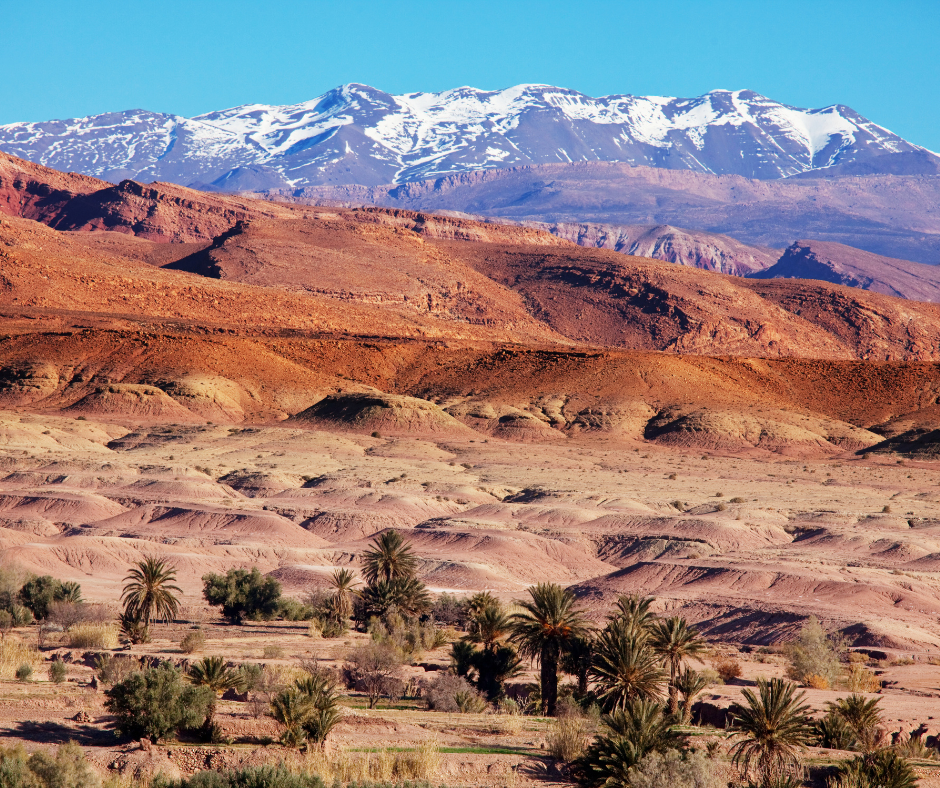
The Atlas Mountains, a short distance from Marrakech, offer a dramatic change in scenery and a wealth of natural inspiration. These mountains provide a perfect setting for landscape painting and photography, with their stunning vistas and changing light conditions.
Day trips to the Atlas Mountains allow artists and photographers to capture the rugged beauty of the landscape, characterized by its panoramic views, terraced valleys, and traditional Berber villages. The interplay of light and shadow over the mountains creates dynamic and compelling compositions, ideal for those seeking to capture nature’s majesty.
Cultural Encounters in Berber Villages
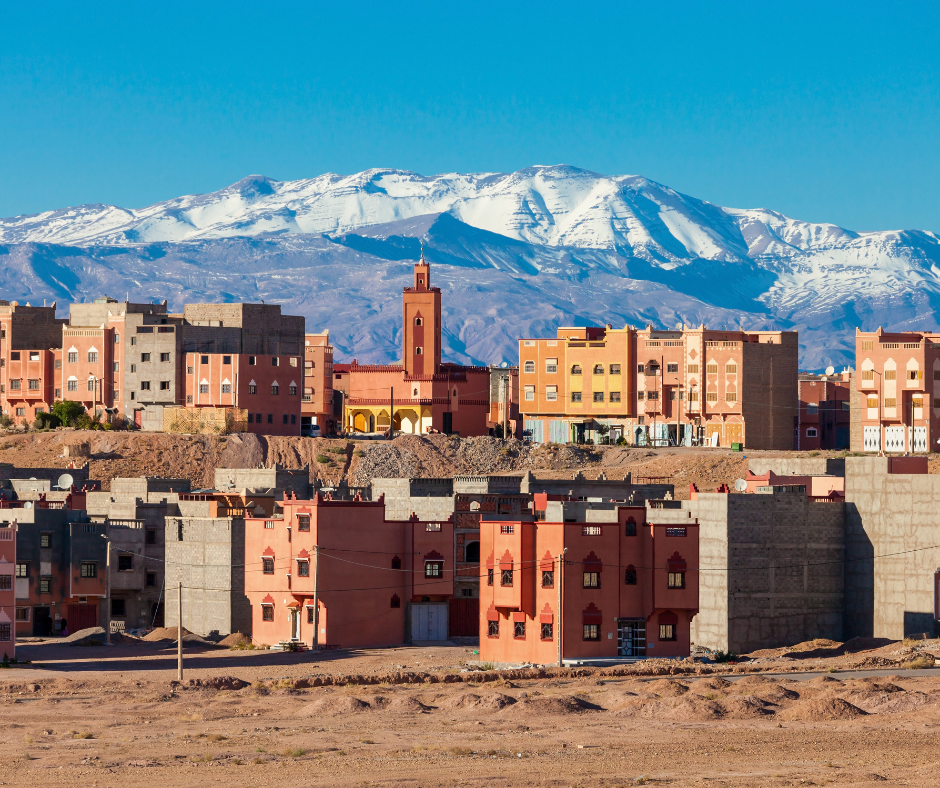
Beyond the scenic landscapes, the Atlas Mountains are home to several Berber villages. These cultural excursions offer creatives a chance to immerse themselves in the daily life and traditions of the Berber people.
Experiencing the local culture, traditional architecture, and artisan crafts provides a rich source of inspiration. These encounters not only broaden the creative perspective but also offer a deeper understanding of the cultural diversity within Morocco.
A Weekend Away in the Sahara Desert
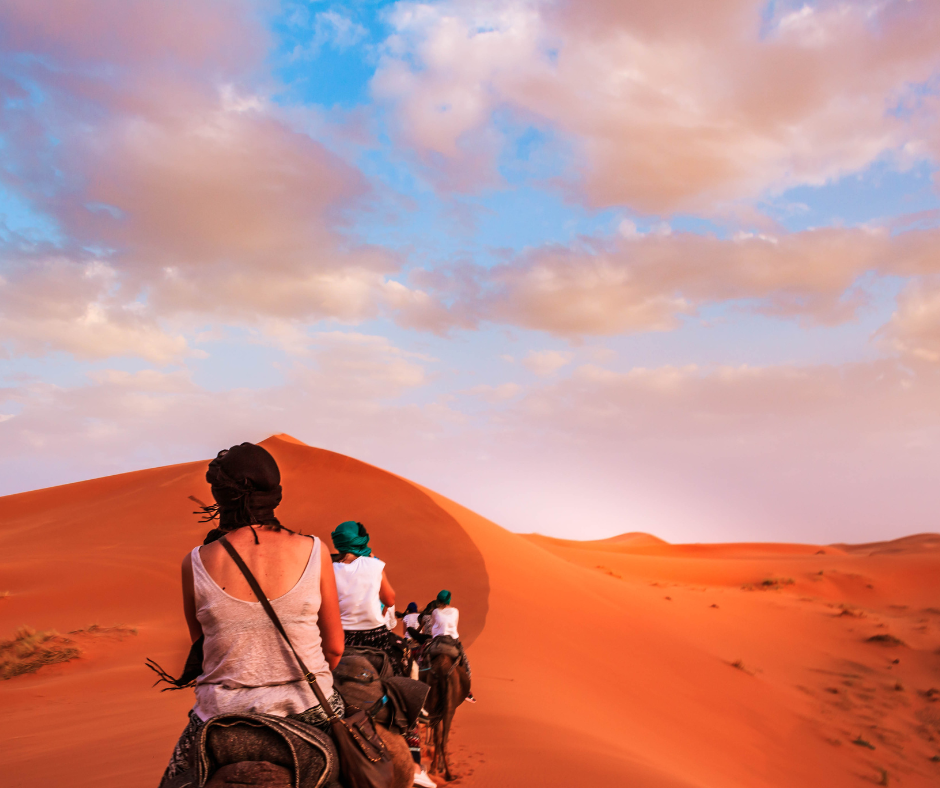
Marrakech serves as a popular starting point for tours and expeditions to the Sahara Desert. The closest part of the Sahara Desert to Marrakech is several hours away, typically requiring a journey of at least a day by car or bus.
The most common destinations in the Sahara for those traveling from Marrakech include the dunes of Erg Chebbi near Merzouga and Erg Chigaga near M’Hamid. These locations are known for their stunning sand dunes and offer a quintessential desert experience, including camel treks, overnight stays in desert camps, and stargazing.
Visitors often embark on multi-day tours to the Sahara Desert from Marrakech, which not only include the desert experience but also stops at various towns, kasbahs, and geographical features along the way. Below is a suggested itinerary based on our experiences in Morocco.
Day 1: Marrakech to Merzouga (Erg Chebbi Dunes)

Start your journey early in the morning from Marrakech. The drive to Merzouga, near the Erg Chebbi dunes, is long but scenic. You’ll pass through the dramatic landscapes of the Atlas Mountains, with stops at panoramic viewpoints.
Around midday, visit the UNESCO World Heritage site of Aït Benhaddou, a traditional mud-brick city that has been the backdrop for many films. Afterward, have lunch in Ouarzazate, often referred to as the gateway to the Sahara.
Arrive in Merzouga by the evening. Here, switch from your vehicle to camels for a trek into the dunes of Erg Chebbi. This is a perfect opportunity to enjoy the sunset over the Sahara. Spend the night in a luxury desert camp.
Enjoy a romantic dinner under the stars, accompanied by traditional Berber music. The clear night skies in the desert are ideal for stargazing.
Day 2: Exploring the Sahara and Merzouga Region
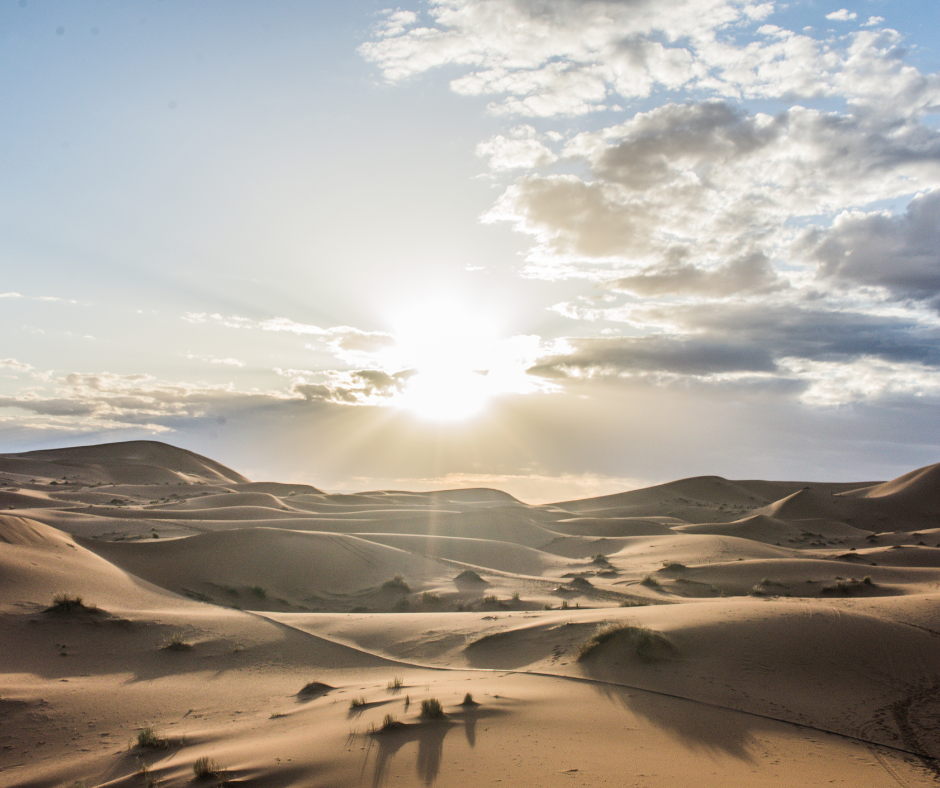
Wake up early to catch the sunrise over the dunes, a truly magical experience. After breakfast at the camp, explore the surroundings. Engage with local Berber culture by visiting nomad families or nearby villages.
Alternatively, partake in activities like sandboarding or a 4×4 desert tour. Spend the afternoon relaxing at your camp or exploring the dunes. This could be a great time for a romantic walk through the desert. Enjoy another evening at your desert camp. A special romantic setup can be arranged for dinner, perhaps on a private dune.
Day 3: Return to Marrakech
After breakfast, start your journey back to Marrakech. You can opt for a different route for varied scenery, possibly via the Draa Valley, known for its stunning oases and kasbahs. Stop for lunch in one of the small towns en route. Enjoy the changing landscapes as you move from desert to mountains. Arrive back in Marrakech by the evening. Depending on your time of arrival, enjoy a leisurely dinner in the city to conclude your Sahara desert adventure.
Majestic Gardens
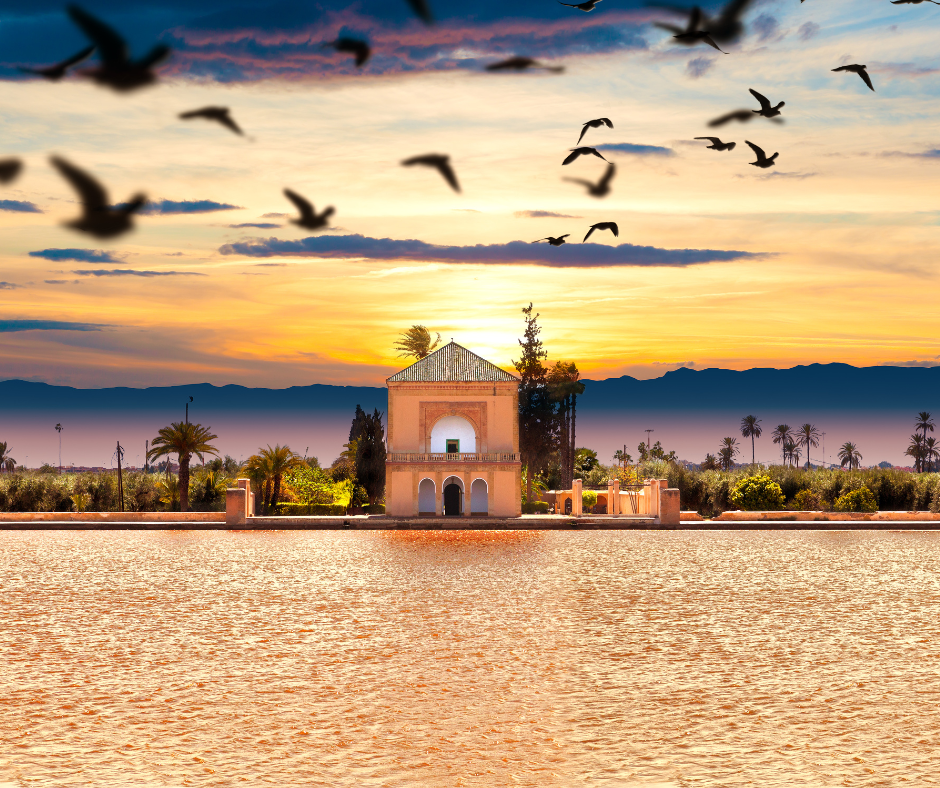
The Menara Gardens are a historic site in North Africa, renowned for their tranquil beauty and iconic green pavilion. These gardens, set against the backdrop of the Atlas Mountains, offer a serene environment ideal for contemplation and creative thought.
The symmetrical layout of the gardens, reflecting traditional Islamic garden design, provides a structured yet peaceful setting. The olive groves and large central basin offer varied landscapes for creatives to draw inspiration from, whether for landscape painting, writing, or meditation.
Le Jardin Secret
Le Jardin Secret, located in the heart of the Medina, is a recently restored historic garden that offers a tropical oasis of calm amidst the bustling city. The garden is divided into two main areas, each showcasing different aspects of Islamic garden design.
The exotic plants, ornamental water features, and detailed tilework provide a rich sensory experience. The garden’s design embodies principles of harmony and symmetry, making it a source of inspiration for those interested in botanical art, landscape design, and architectural photography.
The peaceful ambiance of Le Jardin Secret makes it an ideal spot for creatives seeking a quiet retreat for reflection and inspiration.
Networking and Collaboration Opportunities
Creative Hubs and Co-working Spaces
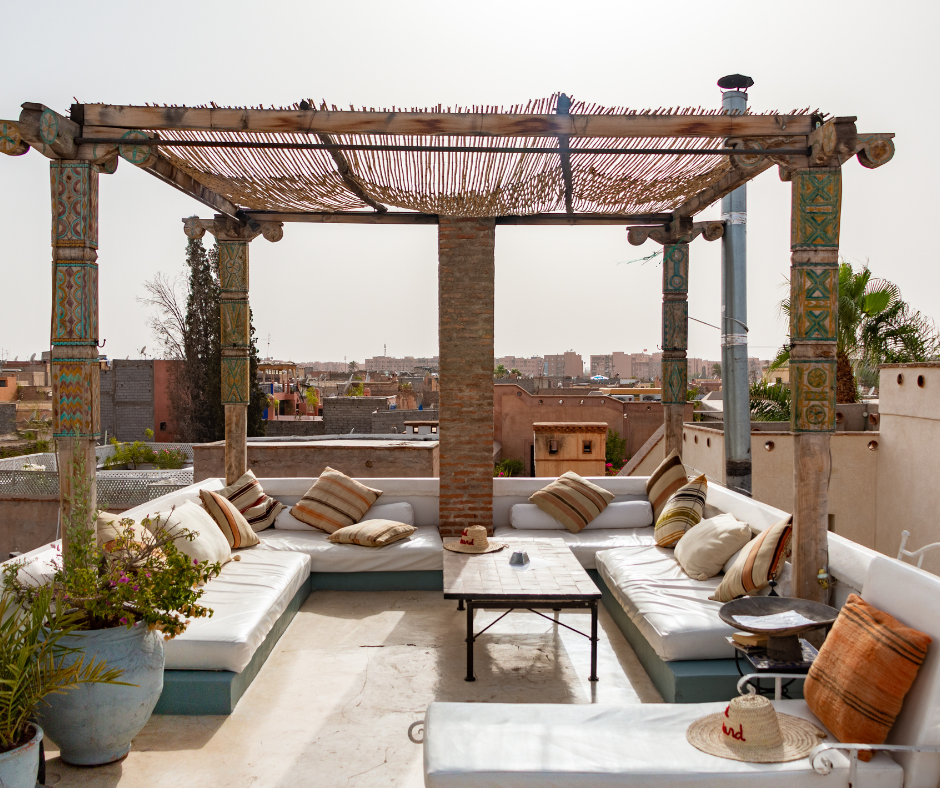
Marrakech has seen a burgeoning growth in co-working spaces that cater to the needs of creatives and digital nomads. These spaces are designed to foster a collaborative and inspiring environment where individuals from various creative backgrounds can work alongside each other.
They often feature a blend of traditional Moroccan aesthetics and modern design, creating an ambiance that is both culturally rich and conducive to productivity. Equipped with essential amenities and often hosting workshops, talks, and exhibitions, these co-working spaces are not just about providing a desk but nurturing a community of creatives.
The key advantage of these co-working spaces is the opportunity they present for networking and collaboration. They serve as melting pots where artists, writers, designers, and entrepreneurs can interact, share ideas, and potentially collaborate on projects.
Regular networking events and social gatherings are common, facilitating connections among local and international creatives. This environment of shared ideas and resources is invaluable for anyone looking to expand their professional network or seeking collaboration opportunities within the vibrant creative community of Marrakech.
Local Art and Music Festivals

Marrakech hosts a variety of art and music festivals throughout the year, each offering unique experiences and showcasing local and international talent. The Marrakech Biennale is one such event, a contemporary arts festival that includes exhibitions, performances, and discussions.
Another significant event is the Gnaoua World Music Festival, which celebrates the mystical Gnaoua music alongside jazz, pop, rock, and contemporary world music. These festivals are not only significant cultural events but also serve as platforms for artistic expression and exchange.
Participation in these festivals can take various forms. Creatives can apply to exhibit or perform, volunteer for event organization, or simply attend as spectators. Many festivals also offer workshops, masterclasses, and panel discussions, providing opportunities for learning and direct engagement with artists and experts.
Getting involved in these festivals offers a chance to be part of a larger creative community, to gain exposure, and to draw inspiration from a diverse range of artistic expressions. These events are integral to understanding the contemporary cultural landscape of Marrakech and offer numerous opportunities for creative growth and community engagement.
Relaxation and Rejuvenation for Creatives
Traditional Hammams

Traditional hammams play a vital role in Moroccan culture, serving as places for both physical and spiritual cleansing. These bathhouses offer a unique experience that combines steam baths, body scrubs, and massages.
For creatives, visiting a hammam can be a rejuvenating experience, offering a space to unwind and find inspiration in the tranquility. The process of the hammam, with its ritualistic stages, provides an opportunity to disconnect from the external world and engage in introspective reflection, an essential aspect for creative rejuvenation.
Marrakech hosts a variety of hammams, ranging from the opulent and luxurious to the traditional and communal. Luxurious hammams offer a private, more curated experience with a variety of spa treatments, ideal for those seeking solitude and pampering.
In contrast, traditional public hammams offer a more authentic and communal experience, allowing visitors to immerse themselves in the everyday life of locals. Both types provide a distinct experience, catering to different preferences but equally offering an oasis of relaxation within the bustling city.
Quiet Retreats
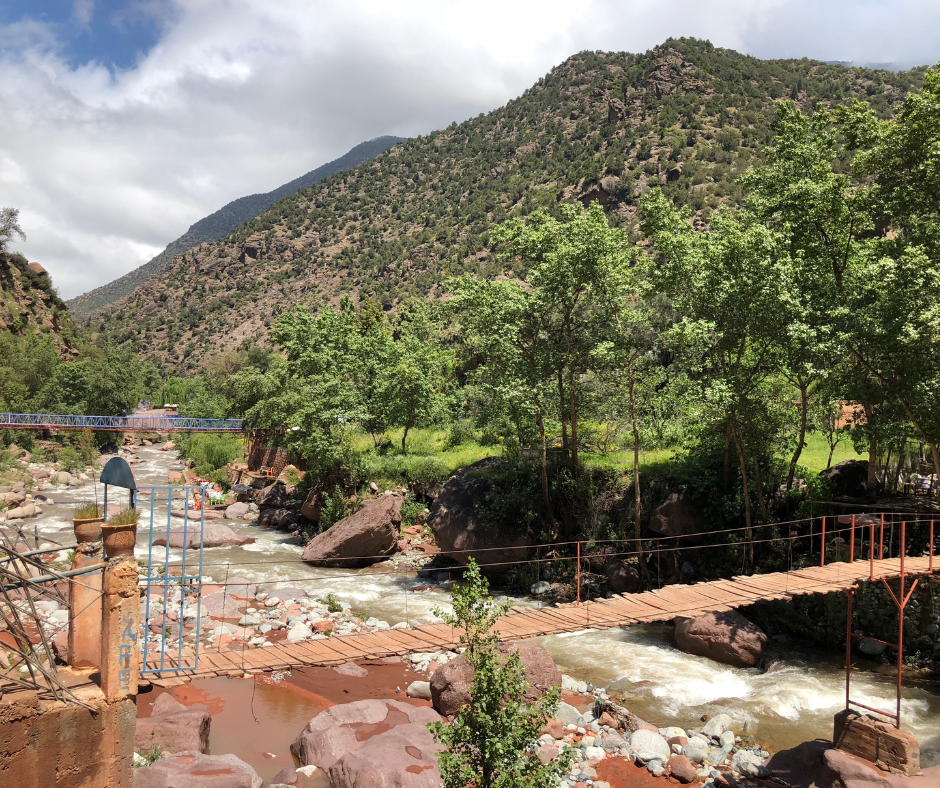
Marrakech and its surroundings offer numerous scenic spots perfect for quiet reflection and creativity. Locations such as the Agafay Desert and the serene Ourika Valley provide a peaceful environment away from the city’s hustle. These natural retreats allow for uninterrupted time, essential for deep creative work like writing, sketching, or conceptualizing new ideas. The natural beauty and serenity of these areas provide a backdrop that stimulates creativity and introspection.
Recommendations for Tranquil Accommodations
For those seeking a peaceful retreat within the city, there are numerous riads and boutique hotels that offer a quiet, intimate atmosphere. These accommodations are often tucked away in the quieter parts of the Medina or the outskirts of Marrakech. A traditional riad provides a serene escape with the convenience of being close to the city’s attractions.
Many of these places have gardens or rooftop terraces, offering a serene space to relax and work. These accommodations are ideal for creatives seeking a balance between accessibility to cultural sites and a peaceful environment for creative work.
Booking a Traditional Riad
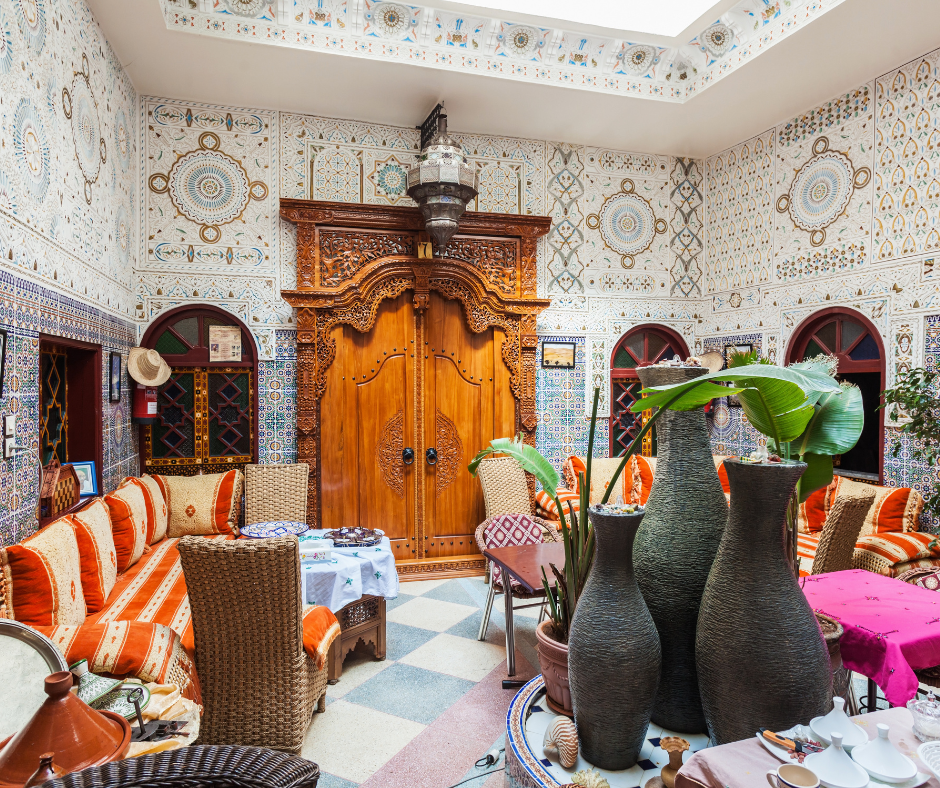
A traditional riad is a type of traditional Moroccan house or palace with an interior garden or courtyard. The term “riad” originates from the Arabic word for garden, “ryad.” These buildings are typically found in the old medinas (historic districts) of Moroccan cities like Marrakech, Fes, and Rabat. Most include a central courtyard, with rooms facing inward.
The defining feature of a riad is its central courtyard, which often contains a fountain and is usually adorned with trees or plants. This courtyard serves as the heart of the house, providing light and air to the surrounding rooms and creating a tranquil, private oasis away from the bustling streets outside.
Riads are known for their intricate and ornate design, showcasing the richness of Moroccan architecture. This includes detailed, colorful tiles (zellige), carved wood, stucco plasterwork, and painted ceilings. The design often reflects a blend of Islamic and Andalusian architectural styles.
The rooms of a riad typically face inward toward the courtyard, maintaining privacy and tranquility. This inward focus contrasts with Western architecture, which often emphasizes outward-facing views.
Most riads are two or more stories high. The lower floor is often reserved for communal family spaces, like living rooms and dining areas, while the upper floors usually contain private bedrooms. Many riads feature rooftop terraces, which provide additional space for relaxation and offer views of the city. A riad’s rooftop terrace is often used for dining, socializing, and enjoying the cooler evening air.
In contemporary times, many traditional riads have been converted into boutique hotels or guesthouses, providing visitors with a unique and authentic Moroccan lodging experience. These renovations often preserve the historical and architectural essence of the riad while adding modern comforts and amenities. Staying in a riad allows visitors to experience the traditional Moroccan way of living, with its emphasis on family, community, and the serene beauty of its interior spaces.
Final Thoughts on Your Trip to Marrakech
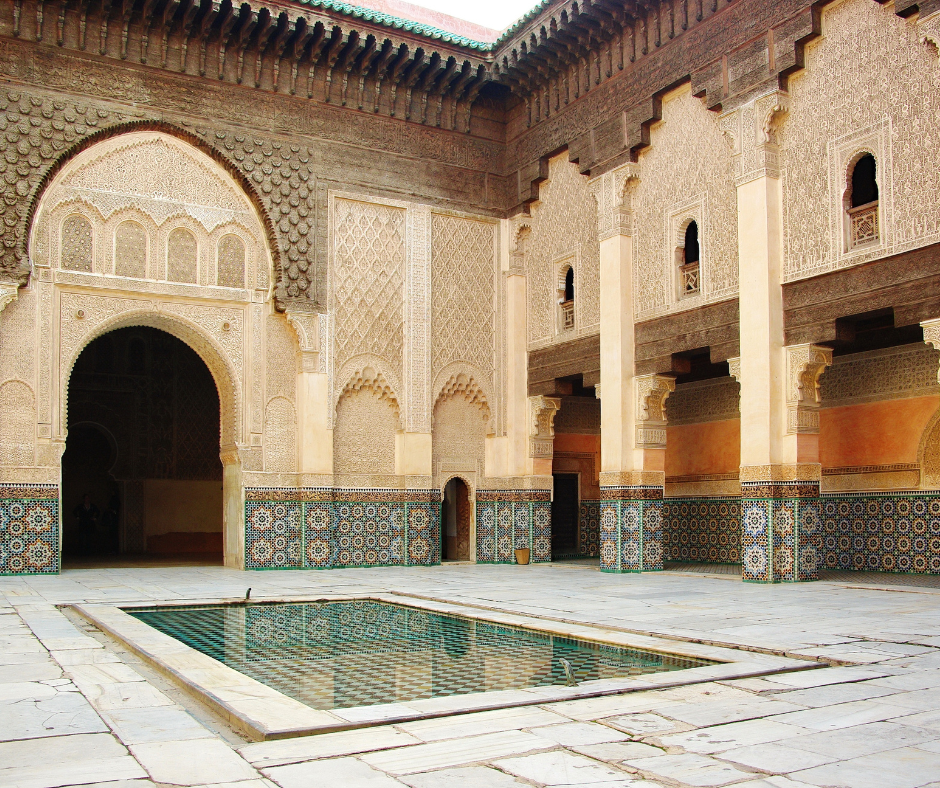
Visiting Marrakech means a rich tapestry of experiences that cater to the diverse needs of creative minds. From the historical depth of its Medina and the artistic vibrancy of its galleries and festivals, to the natural splendor of the Atlas Mountains and the serene retreats within and outside the city, Marrakech offers a myriad of opportunities for inspiration and creative exploration.
This city not only provides a backdrop for artistic endeavors but also invites creatives to immerse themselves in a cultural journey that stimulates the senses and nurtures the soul. Readers are encouraged to delve into the multifaceted experiences of Marrakech, to seek out their unique sources of inspiration, and to embrace the myriad ways in which this city can enrich their creative journey.





